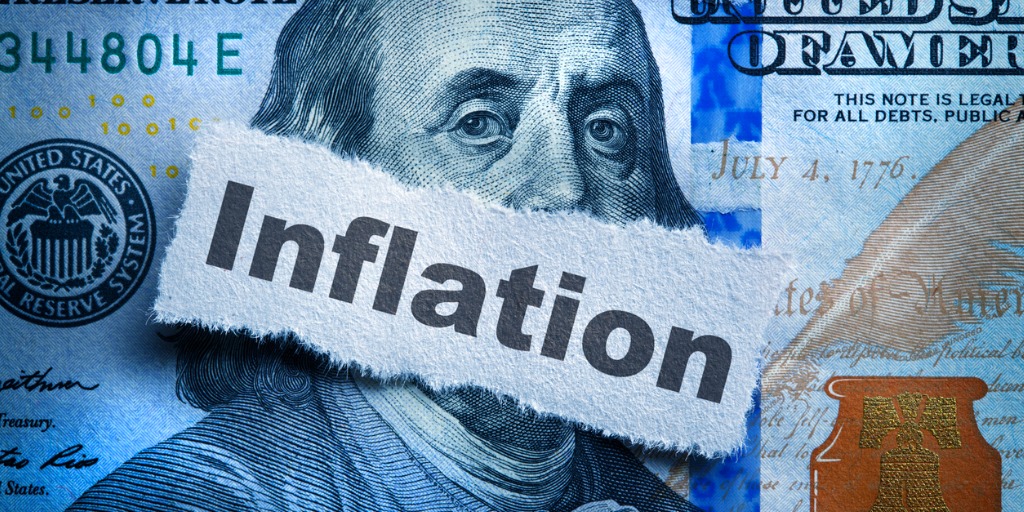Inflation targeting – What it is, and has the 2% goal run its course?
Inflation targeting has been used as a monetary policy tool by central banks since the late 1980s, but recent events have raised the question as to whether the sacrosanct 2% target should be raised. What would be the implications of setting a higher target, and would it help solve an inflation crisis such as that currently being experienced?
***
Prefer to listen instead of read? Use the links or player below to listen to this article as published on our podcast, The Intuition Finance Digest.
Listen on Spotify | Listen on Apple Podcasts | Listen on Amazon Music
***
“Price stability creates conditions for more stable economic growth and a more stable financial system. Trust that the central bank delivers on its price stability mandate gives people and firms more confidence to spend and invest.”
Such is the reasoning for inflation targeting, according to the European Central Bank (ECB).
This task seemed relatively routine for many years this century. In fact, the period following the global financial crisis of 2007-09 was marked by desperate central bank intervention to stave off global recession, notably through quantitative easing. Despite unprecedented injections of liquidity, central banks consistently missed on the downside their objective to sustain inflation rates at 2%.

Runaway inflation and rate rises
This all seems like a lifetime ago following the effects of the COVID crisis which were to trigger a range of incendiary inflation dynamics, leading to inflation rates not seen since the 1970s, and prompting record policy rate increases by monetary authorities to dampen runaway price rises.
Since the end of the 1990s, a 2% inflation target has been an article of faith among the major central banks. On the face of things, this seems an arbitrary figure to have gained almost universal acceptance among the central banking community. The rationale would appear to be as follows: the target is sufficiently low to preserve purchasing power but also leaves sufficient room to maneuver on interest rates should the prospect of deflation arise. Retaining a 2% margin above 0% is prudent because it reduces the risk of entering into deflationary territory. Furthermore, there is evidence that some inflation measures – such as the US Consumer Price Index (CPI) – overstate inflation somewhat, perhaps by about 1%, further reducing margin for error. (The main reason for this is thought to be “substitution bias,” which means that when the price of a product in the CPI basket increases significantly, consumers tend to switch to lower-priced substitutes.)
[What is inflation? Causes, hyperinflation, and deflation explained]

Is the 2% inflation target still valid?
Lately, there has been much discussion as to whether the 2% target pursued by many leading central banks is still appropriate. After all, over the past 25 years the world has experienced massive changes in structural inflationary factors. These include dramatic changes in productivity, the arrival of globalized supply chains, and substantial demographic shifts.
Given this, what if there was a change to, say, a 3% target. How, in particular, might financial markets react?

Financial markets and inflation
First, the transition would have to be flagged well in advance to neutralize the prospect of extreme short-term market volatility. Over the longer term, the impact would be on interest rates, with higher nominal rates all along the yield curve.
An increase in central bank inflation targets is generally positive for risk assets. The reason for this is that a higher inflation target gives central banks more scope to cut the policy rate in the event of a downturn. This also implies potential to reduce long-term yields through forward guidance and, if appropriate, quantitative easing.
Equities have historically outperformed relative to inflation over the long term but, in the short term, high inflation leads to mixed results. Although inflation boosts nominal sales, more than compensating for inflation-led margin compression, this can be neutralized by a number of factors. Extremely high levels of inflation, for instance, can dampen demand and, where high inflation gives rise to monetary tightening or high real interest rates, this will be negative for equity valuations (although this hardly applies at a level of 3%).
A final point is that there has traditionally been an inverse relationship between inflation and unemployment, so a higher inflation target could lead to lower unemployment, boosting nominal economic growth.

Changing the inflation targeting consensus
Given the recent reversal of so many deflationary factors, it would seem sensible that the 2% target at a minimum be kept under constant review if not revisited entirely. But changing the consensus raises a number of issues.
First, a word that is always top-of-mind with central banks: credibility. With inflation still raging, the prospect of central banks raising inflation targets at this stage would likely be interpreted as an admission of defeat and undermine their authority.
With both the US Fed and the ECB recently adjusting their inflation regimes, changing the inflation target would run counter to conditions promoting stability and predictability in the economy – the precise virtues that central bank inflation targeting is supposed to foster.
Finally, central banks are increasingly operating in a politicized environment, and the notion that they would be free to arbitrarily change such a policy parameter is unrealistic. So, for the foreseeable future, the 2% target seems here to stay.
Intuition Know-How has a number of tutorials related to the content of this article:
- Economic Indicators – An Introduction
- Inflation – An Introduction
- Inflation Indicators
- GDP Indicators
- Labor Market Indicators
- Equity Markets – An Introduction
- Equity Valuation – An Introduction
- Financial Authorities (US) – Federal Reserve
- Financial Authorities (UK) – Bank of England
- Financial Authorities (Europe) – ECB
- Global Financial Crisis – Causes, Impact, & Legacy


